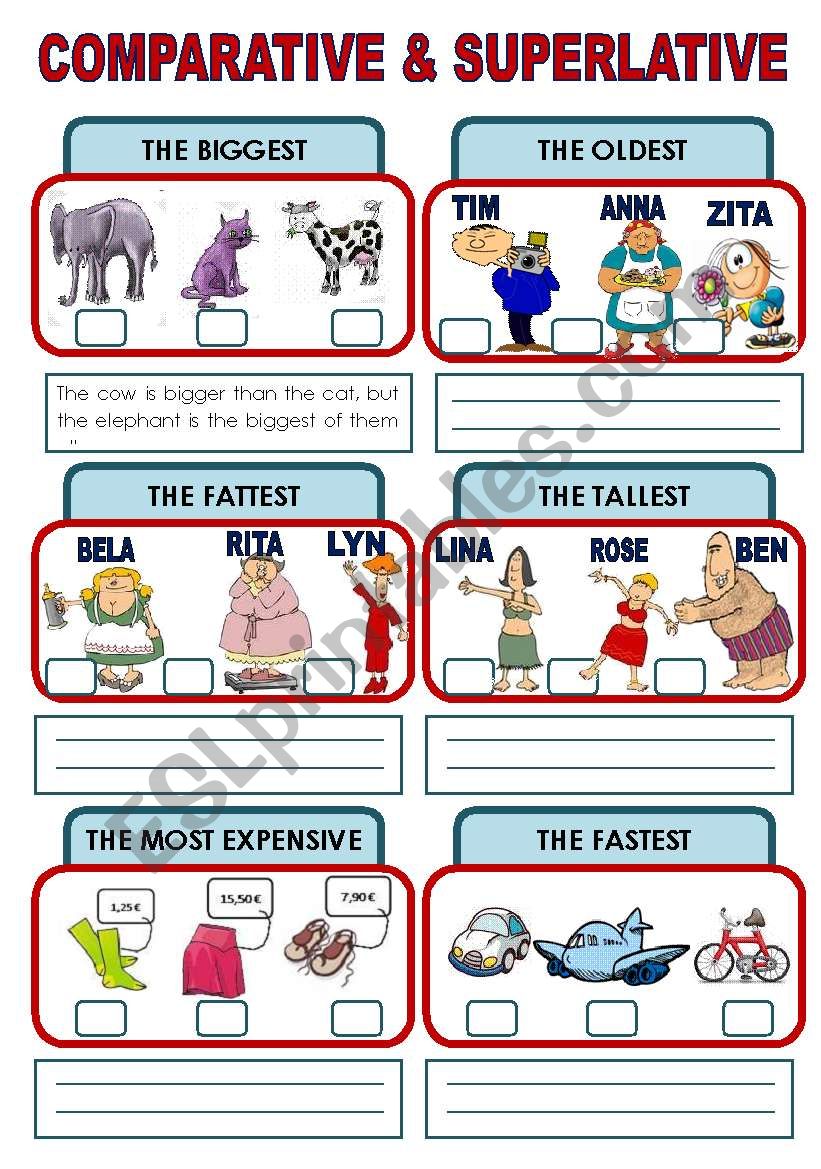
Mastering English Grammar: The Indispensable Role of Comparative and Superlative Activity Worksheets
English, a language of immense descriptive power, relies heavily on adjectives and adverbs to paint vivid pictures, make precise distinctions, and convey nuanced meaning. At the heart of this descriptive capability lie comparatives and superlatives – grammatical forms that allow us to compare two or more entities or identify the extreme among a group. For learners navigating the complexities of English, truly mastering these forms is not merely an academic exercise but a fundamental step towards fluent and articulate communication. And in this journey, the consistent and varied use of comparative and superlative activity worksheets proves to be an invaluable, almost indispensable, tool.
This article will delve into the profound importance of comparatives and superlatives, explore why worksheets are such an effective pedagogical approach, examine the diverse types of comparative and superlative activity worksheets available, and offer insights into designing and integrating them for maximum learning impact.
The Cornerstone of Comparison: Understanding Comparatives and Superlatives

Before exploring the utility of worksheets, it’s crucial to grasp the grammatical concepts themselves.

- Comparatives: Used to compare two things, people, or groups. They typically end in "-er" (for short adjectives like "taller," "faster") or use "more" before the adjective (for longer adjectives like "more beautiful," "more intelligent"). The structure often involves "than" (e.g., "She is taller than him," "This book is more interesting than that one").
- Superlatives: Used to compare three or more things, people, or groups, indicating the one that possesses the highest or lowest degree of a quality. They usually end in "-est" (for short adjectives like "tallest," "fastest") or use "most" before the adjective (for longer adjectives like "most beautiful," "most intelligent"). They are almost always preceded by "the" (e.g., "He is the tallest in the class," "This is the most interesting book I’ve ever read").
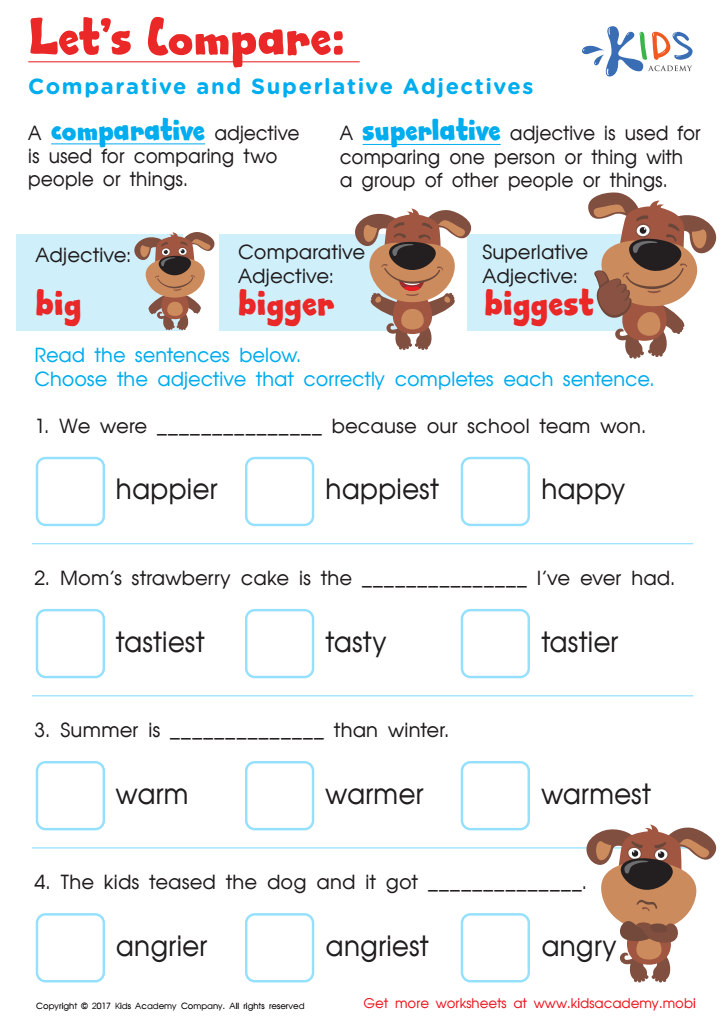

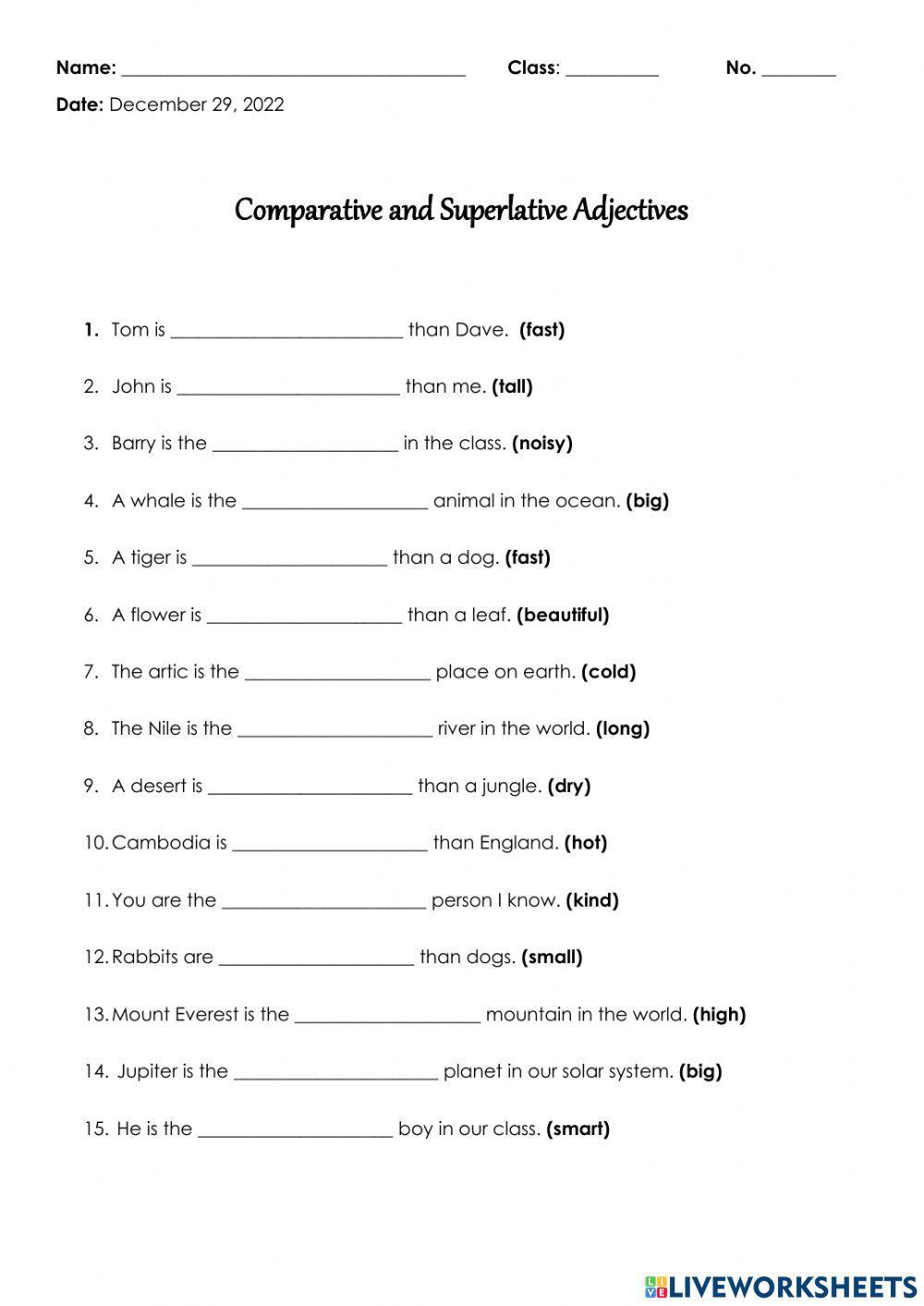
Beyond these basic rules, there are irregular forms (good/better/best, bad/worse/worst, far/farther/farthest or further/furthest) and specific spelling rules (e.g., doubling the final consonant: "big/bigger/biggest"; changing ‘y’ to ‘i’: "happy/happier/happiest"). The sheer number of rules, exceptions, and nuances makes this a challenging area for many learners, underscoring the need for structured and repetitive practice.
Why Worksheets? The Power of Structured Practice
In an age of digital learning tools and interactive apps, the humble worksheet might seem old-fashioned. However, its enduring effectiveness, particularly for grammar acquisition, cannot be overstated. Worksheets offer:
- Focused Practice: They isolate specific grammatical points, allowing learners to concentrate solely on comparatives and superlatives without distraction.
- Repetition for Reinforcement: Mastering grammar requires repetition. Worksheets provide ample opportunities to apply rules multiple times, cementing them in memory.
- Self-Paced Learning: Learners can work through exercises at their own speed, reviewing difficult sections or accelerating through familiar ones.
- Immediate Feedback (with Answer Keys): When accompanied by answer keys, worksheets allow learners to instantly check their understanding, identify errors, and correct them. This immediate feedback loop is vital for effective learning.
- Bridging Theory to Application: Grammar rules can seem abstract. Worksheets provide concrete scenarios where learners must apply the rules, translating theoretical knowledge into practical usage.
- Tangible Progress: Completing a worksheet provides a sense of accomplishment, boosting confidence and motivating further study.
- Versatility: Worksheets can be used for individual study, pair work, group activities, homework, or in-class assessments.

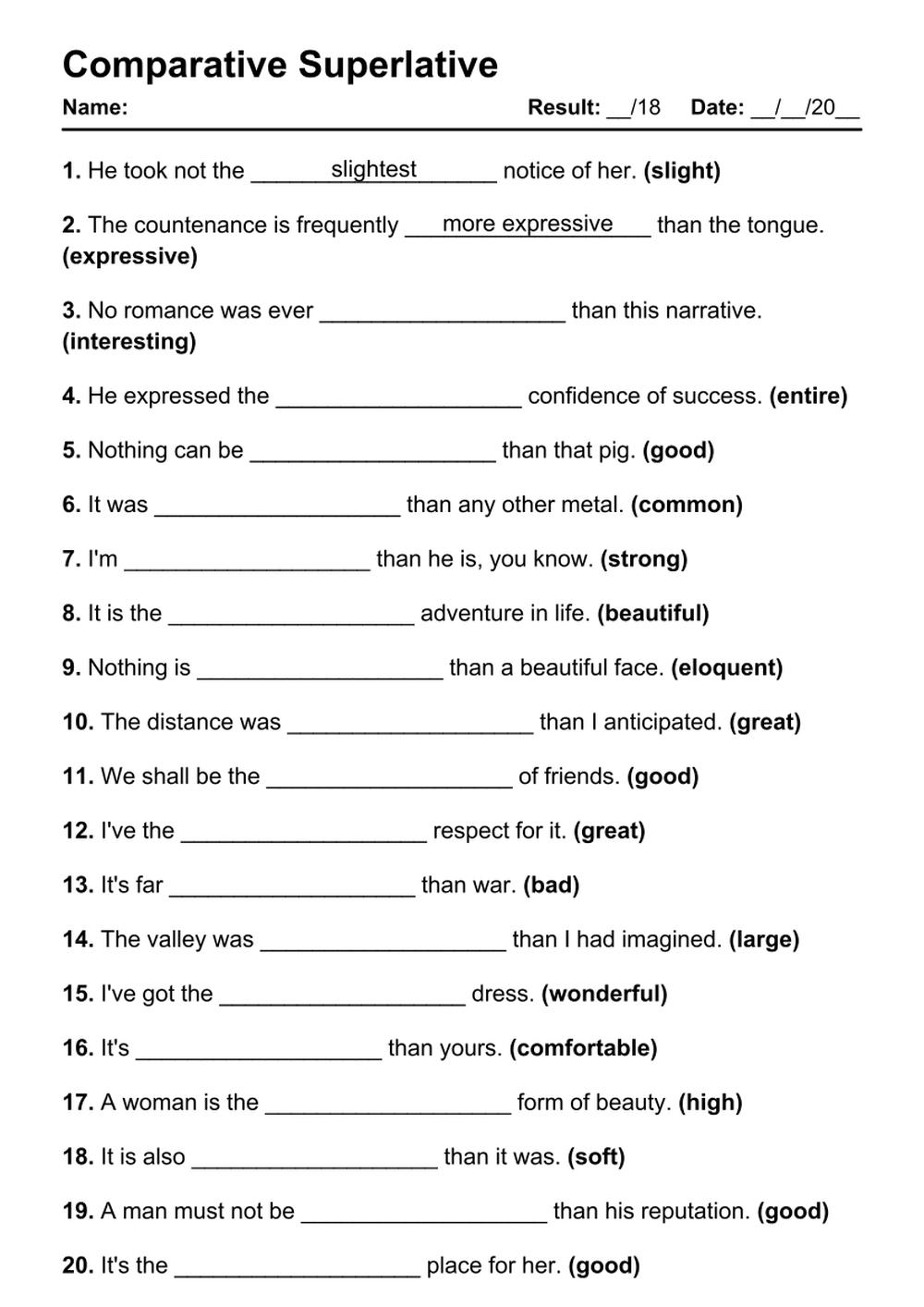

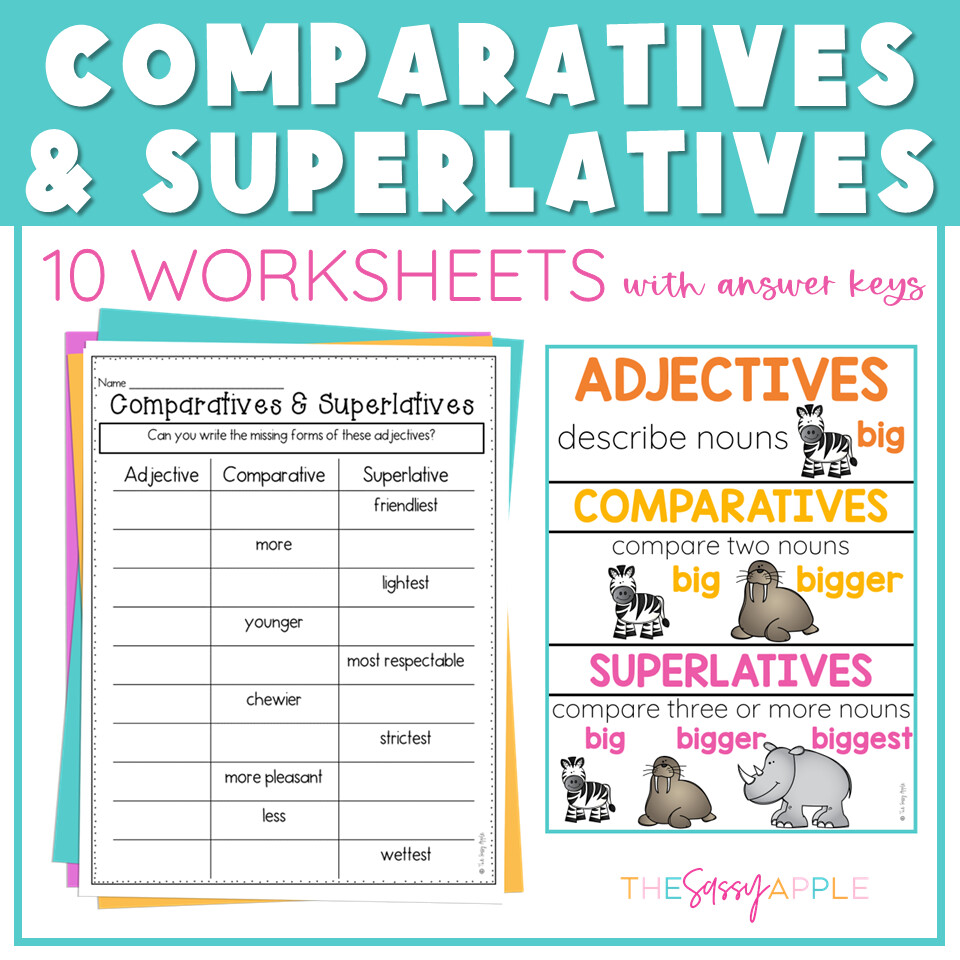
A Spectrum of Engagement: Types of Comparative and Superlative Activity Worksheets
The diversity of comparative and superlative activity worksheets is one of their greatest strengths. They can cater to different learning styles, proficiency levels, and lesson objectives. Here’s a breakdown of common and effective types:
-
Basic Formation Drills:
- Adding -er/-est and More/Most: Simple exercises where learners are given a base adjective and must write its comparative and superlative forms. E.g., "long -> , " or "beautiful -> , ".
- Irregular Forms Practice: Dedicated sections for irregular adjectives (good, bad, far, little, much/many), ensuring learners memorize these exceptions.
- Spelling Rules Focus: Worksheets that specifically target spelling changes (e.g., "big" vs. "fat," "happy" vs. "pretty").
-
Sentence Completion and Gap-Filling:
- Learners are given sentences with blanks and must fill them with the correct comparative or superlative form of a given adjective. E.g., "My brother is (tall) than me." or "Everest is the (high) mountain in the world."
- These can be structured to prompt the use of "than" or "the" as well.
-
Error Correction Worksheets:
- Sentences are provided with grammatical errors related to comparatives and superlatives. Learners must identify and correct them. E.g., "She is most pretty than her sister." (Correction: "prettier").
- This type encourages critical thinking and a deeper understanding of the rules.
-
Comparison of Objects/People/Concepts:
- Picture-Based Comparisons: Worksheets featuring two or more images (e.g., two animals of different sizes, three buildings of varying heights). Learners write sentences comparing or describing them using comparatives and superlatives.
- Data-Based Comparisons: Providing simple data sets (e.g., heights of students, prices of items, speeds of vehicles). Learners write sentences comparing the data points. E.g., "John is 170cm, Sarah is 165cm, Tom is 175cm. Tom is the _____ student."
-
Creative Writing Prompts:
- Learners are given a scenario (e.g., "Describe your dream vacation," "Compare two of your favorite hobbies") and must write a short paragraph or story, intentionally incorporating a certain number of comparative and superlative forms.
- This moves beyond rote memorization into productive language use.
-
Discussion and Debate Prompts:
- While often leading to speaking activities, these can be structured as comparative and superlative activity worksheets where learners prepare arguments. E.g., "Which is more important: money or happiness? Explain why." or "What is the best invention of all time? Justify your answer." Learners fill in their arguments using the target grammar.
-
Matching and Categorization:
- Matching adjectives to their correct comparative/superlative forms.
- Categorizing adjectives into groups based on their formation rules (e.g., "-er/-est" vs. "more/most").
-
Listening and Reading Comprehension:
- Worksheets accompany a short audio clip or text. Learners listen/read and then identify all the comparatives and superlatives, or answer questions that require them to use these forms based on the information provided.
-
Games and Puzzles:
- Crosswords where clues require comparative/superlative answers.
- Word searches for adjectives that can be compared.
- Board games where moving spaces requires forming correct comparative/superlative sentences.
Designing and Integrating Effective Worksheets
Creating or selecting effective comparative and superlative activity worksheets involves several considerations:
- Clear Instructions: Ambiguous instructions can hinder learning. Ensure that learners know exactly what they need to do.
- Gradual Difficulty: Start with simpler formation drills and progress to more complex sentence construction, error correction, and creative application.
- Variety of Tasks: Mix and match different exercise types within a single lesson or over a series of lessons to maintain engagement and address different aspects of the grammar.
- Engaging Content: Use relatable topics, interesting facts, or humorous scenarios to make the exercises more enjoyable.
- Visual Appeal: Well-designed worksheets with clear layouts, appropriate spacing, and relevant images can significantly improve learner motivation.
- Provide Answer Keys: This is crucial for self-correction and independent learning.
- Differentiation: Offer different levels of worksheets to cater to learners with varying proficiency levels. Some might need more basic drills, while others are ready for complex application tasks.
Integrating these worksheets into a broader learning strategy is key. They should not be isolated activities but rather components of a comprehensive lesson plan:
- Pre-teaching: Use worksheets for diagnostic assessment to see what learners already know.
- During-teaching: Incorporate worksheets for guided practice immediately after introducing the rules.
- Post-teaching: Assign worksheets for independent practice, homework, or review.
- Follow-up Activities: Encourage learners to use the grammar from the worksheets in speaking activities (e.g., "Now, compare your two favorite movies using the forms you practiced"), writing tasks, or peer teaching.
Conclusion
Mastering comparatives and superlatives is a critical milestone for any English language learner, unlocking a new level of descriptive power and precision in their communication. While various teaching methodologies exist, the enduring value of comparative and superlative activity worksheets remains undeniable. They provide the structured, repetitive, and focused practice necessary to internalize complex grammatical rules, build confidence, and bridge the gap between theoretical knowledge and practical application. By thoughtfully designing and integrating a diverse range of these worksheets, educators can provide learners with the essential tools they need to navigate the nuances of English grammar and express themselves with greater clarity, eloquence, and accuracy.
